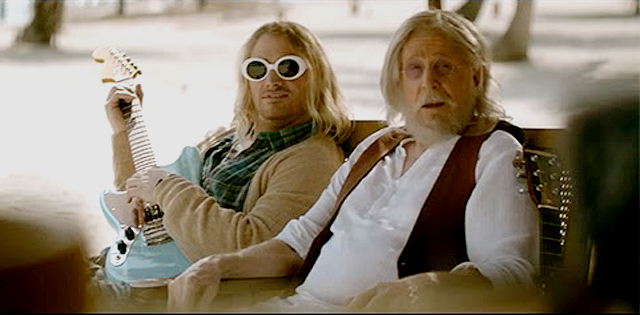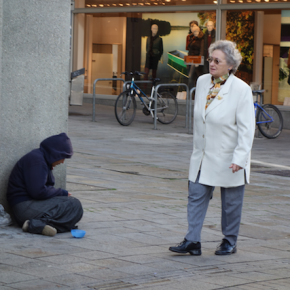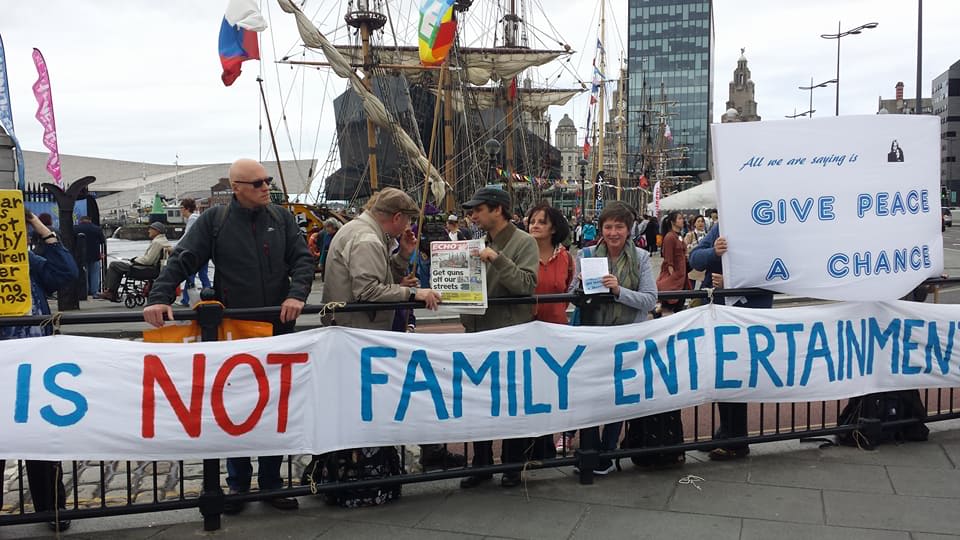Over the past month, pieces marking the twentieth anniversary of Kurt Cobain’s suicide have built to a crescendo. For those who remember the initial coverage of his death, when his face stared out from publication after publication, the commemoration inspired a disturbing sense of déjà vu. We were being asked to relive something that wasn’t pleasant to begin with, but also, inevitably, to compare that period with our own.
The same held true for the other big music anniversary celebrated in the United States this year, the debut of The Beatles on the Ed Sullivan Show on February 9th, 1964. All through the holiday season, books about the group and a wide variety of collectibles were on prominent display in American stores. At times, it was almost possible to believe that they had been anointed the Next Big Thing, following in the wake of present-day teen idols One Direction.
It certainly wasn’t the first time that the world’s most famous band had experienced a commercial revival. From the release of the red and blue double LPs that served as greatest hits collections in the 1970s, through the belated appearance of their catalogue on CD in the 1980s, the Anthology documentary and accompanying compilations in the 1990s, and the special version of Rock Band devoted to their songs in the late 2000s, The Beatles managed to remain in the public eye in spite of having broken up for good in 1970. But the fiftieth-anniversary tie-ins felt different, as if we weren’t being asked to reflect on their music itself so much as the tumultuous decade which they have came to represent synecdochically.
The fresh-faced lads being screamed at by thousands and thousands of girls immediately called to mind that hard-to-classify period right before the counterculture started making the news: not really naïve, coming as it did, on the heels of John F. Kennedy’s assassination, but somehow still flush with the promise of a future much better than the present, all the more compelling because it was conjured as absence, a blank for young people to fill in.
Although nobody would be foolish enough to suggest that Nirvana and The Beatles are on equal footing, the return of Kurt Cobain’s visage to both physical and virtual newsstands did lay the groundwork for a comparison of the bands’ historical impact. While Nirvana had plenty of detractors after the multi-platinum success of their album Nevermind, it was hard to deny the feeling that April 5th, 1994 marked the end of an era. Even if the explosion of alternative rock in the preceding years was more the result of major-label machinations than a grassroots cultural movement, the refusal of Cobain and his bandmates to smile for the cameras — and their insistence on repeatedly name-checking forebears with little prospect of mainstream success — showed that resistance to corporate exploitation could still be posed.
Maybe it was a pose, primarily, rather than the expression of a deeper-seated politics, but that was still preferable to a world in which artists have no anxiety about selling out their community. The ambivalence that Nirvana communicated about their own fame, whether during interviews or the MTV music awards, where Cobain once appeared to don a Michael Jackson disguise, did a wonderful job of capturing the damned-if-you-do, damned-if-you-don’t attitude of their generation, to whom it was already apparent that they would most likely have to settle for a more stressful, less secure life than the Baby Boomers who had preceded them.

Although punk had already hinted at this self-understanding in the late 1970s and once-independent bands like REM had been articulating similar sentiments for years, the suddenness of Nirvana’s rise to stardom made them the standard-bearer for a shift in white, suburban culture. In retrospect, it’s not difficult to see how this turn towards willful self-marginalization foreshadowed the dispersal of the postwar middle class. At the time, though, there was something exhilarating about the idea that popular artists could still openly repudiate mainstream values.
That may not sound like a very big deal today. But for those of us who had grown up in suburbia during the 1970s and 1980s, when most of what we saw on television and heard on the radio seemed to ratify the status quo without question, the discovery that millions of our fellow teens and twenty-somethings — even those who had previously struck us as acquiescent drones — shared an interest in saying “No” to relentlessly affirmative mainstream culture was truly surprising.
After spending most of our lives being reminded over and over that we lived in a time of decline, far removed from the excitement of the 1960s, we got the sense, however briefly, that it was still possible for things to get better. Or, to be more precise, we got the sense that it was still possible for people to want things to get better, despite all evidence to the contrary; that the desire for social change could still be voiced loud and clear at the level of the masses.
And we also wanted to believe that it was still possible for artists to follow in The Beatles’ footsteps, making work that was progressively more challenging after their commercial breakthrough. Even if Nirvana’s 1993 album In Utero was much closer in feel to the band’s previous releases than Sgt. Pepper’s Lonely Hearts Club Band was to “Love Me Do” and “Please, Please Me”, it still came off as a carefully coordinated retreat from the relative accessibility of Nevermind’s hits, darker sounding — in part due to Steve Albini’s production — even if it wasn’t that big a departure lyrically from the already strange and pessimistic word collages of its predecessor.
Bearing the weight of The Beatles’ example — one that Nirvana specifically invoked, on a number of occasions — can’t have been easy. Although Cobain’s death surely had more to do with his personal demons than big-picture concerns, it was plausible to interpret it, both then and now, as a way of taking his band’s narrative into his own hands once and for all, preempting their inevitable demise. After all, his suicide note did reference Neil Young’s famous line, “It’s better to burn out than to fade away.”
Perhaps it’s only fitting that a rather nauseating new spot for the Dutch beer Bavaria Radler featuring a number of celebrities who died too young — Elvis Presley, Marilyn Monroe, Tupac Shakur — shows us Kurt, guitar in hand, sitting alongside a septugenarian John Lennon. Whatever we make of Cobain’s musical legacy, which remains one of the most profitable in the business, it seems clear that his band’s career has come to serve the same synecdochical function as The Beatles.
When we reflect on Nirvana’s half decade of music with the benefit of hindsight, it’s impossible not to notice that it was set off against many of the biggest historical events since World War II: Tiananmen Square; the collapse of the Eastern Bloc; the declaration of a “New World Order”; the first Gulf War and its aftermath; civil war and genocide in the former Yugoslavia and Rwanda. Even if Americans only experienced most of these indirectly, as news stories, they had a profound effect on the national mood. As the global optimism of 1989 proved unsustainable and the United States began to assert itself, awkwardly, as the world’s only remaining superpower, the sense that an opportunity for peace and well-being had somehow slipped out of everyone’s hands was impossible to ignore.
By this reckoning, 1994 can be regarded as a reprise of 1970, when the hopes stirred in the mid-1960s started to sour for good. For those of us who only experienced the 1960s as history, this parallel was particularly strong. The late 1980s and early 1990s may never have seemed as exciting to us in the moment as the 1960s did in rosy-hued retrospect, but they still represented our generation’s best chance at revolution, whether in culture or politics. However excited we became about subsequent developments — the early years of the worldwide web, the War on Terror, the financial crisis of 2008, Occupy Wall Street and its many offshoots — they were inevitably shadowed by the realization that we had let ourselves believe, however briefly, in the wake of 1989, but ended up having our dreams blown to bits.
It’s funny. If you listen carefully to the title track on Sgt. Pepper’s Lonely Hearts Club Band, you will notice that it is actually projecting The Beatles’ music twenty years into the future, imagining them on a sort of oldies circuit. The conceit may not hold up over the length of the album, but for its second and possibly third tracks, we are meant to be listening to a band that has lost its edge simply by staying together for too long. That’s the fate that has befallen bands from 1960s stalwarts like The Rolling Stones and The Who to 1990s alternative darlings Guided By Voices. But it’s one, for better or worse, which both The Beatles and Nirvana managed to escape. That’s why we are so keen to commemorate their legacies and, by extension, why they provide so much insight into what we think about history.
Faux Cobain and Lennon still courtesy of Bavaria Brewing. All Rights Reserved. Nirvana advert courtesy of Joel Schalit.





